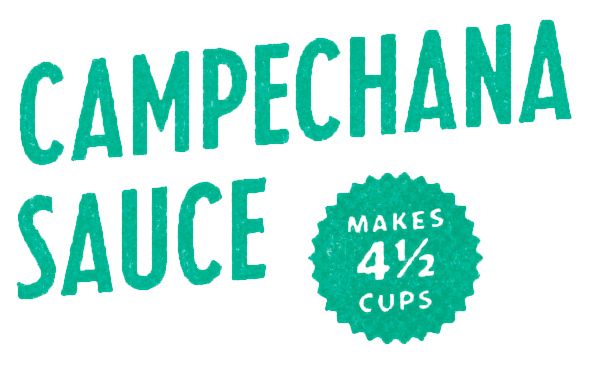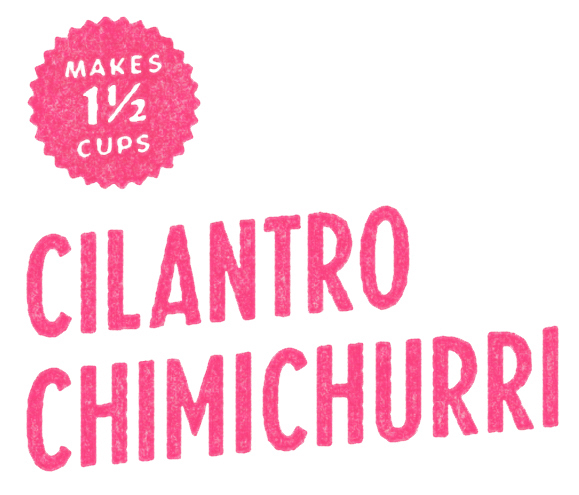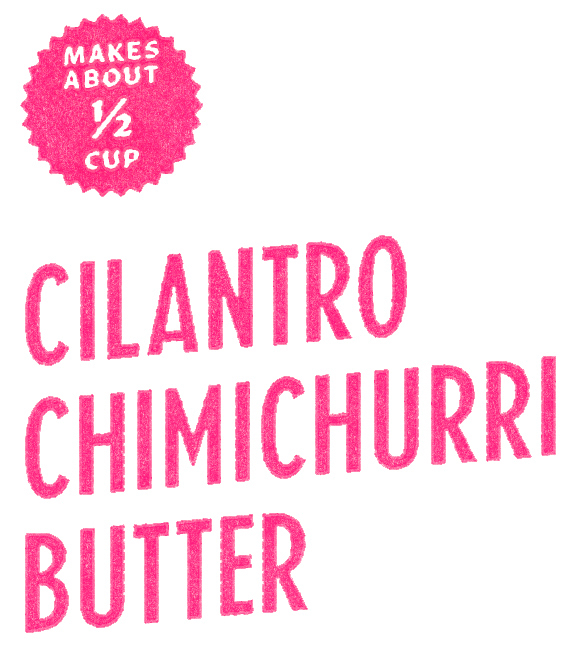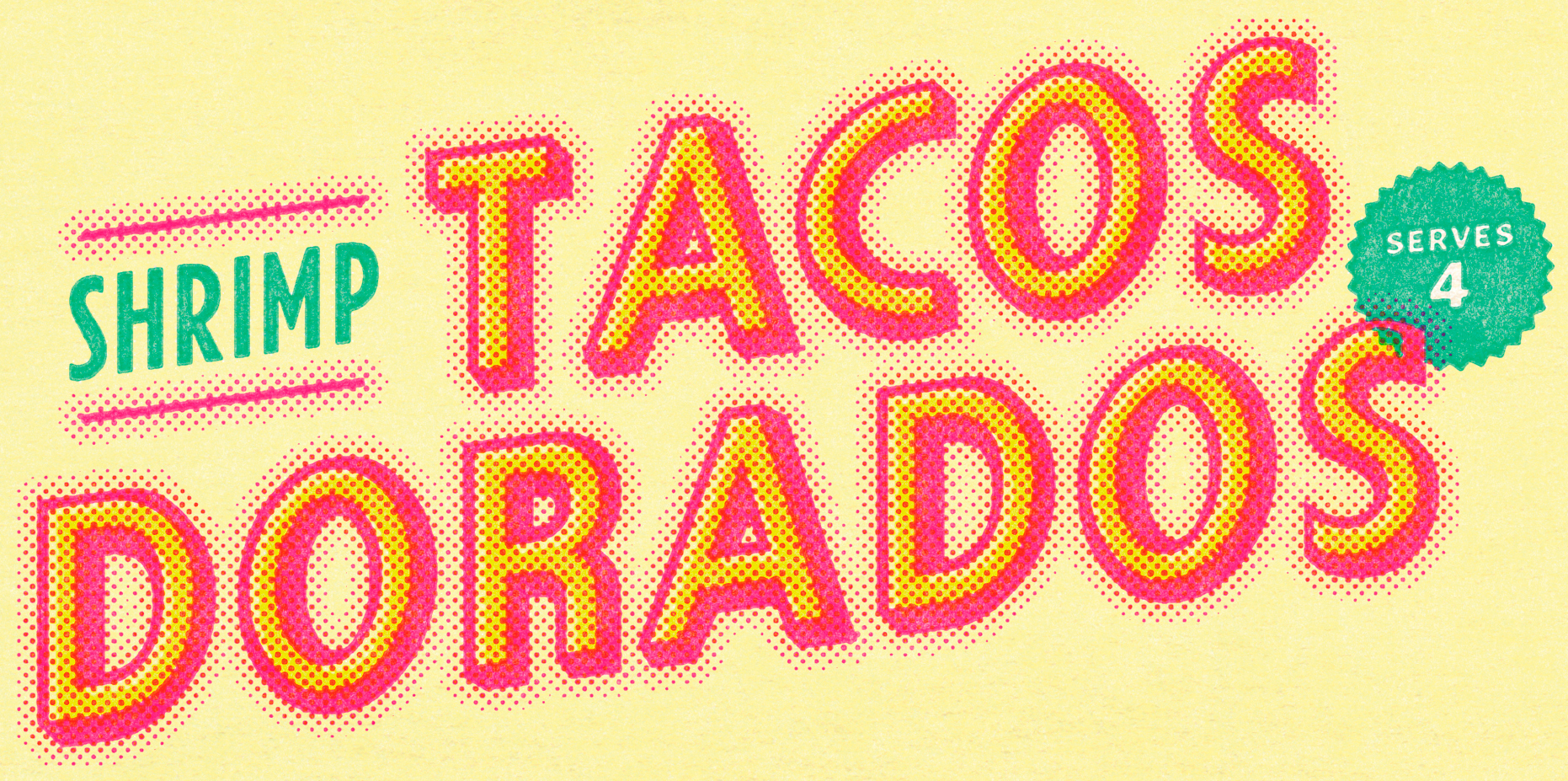

in Tex-Mex cuisine is directly related to the fact that Texas sits along the Gulf of Mexico. That said, seafood didn’t have a place on a Tex-Mex menu for a long time, since the fare evolved in the Rio Grande Valley and the northern and western parts of the state. But things have always been different on the coast. Sure, you’d have all the standard tacos, enchiladas, and steamy bowls of queso, but seafood also played a role. This was particularly true in the likes of Brownsville and Port Isabel, towns located on the southernmost parts of the coastline; up the channel islands of South Padre, Corpus Christi, and Rockport; and on into Houston. (Farther east of Houston, toward Louisiana, is where Tex-Mex wanes and Texas-Cajun cuisine takes precedence.) This chapter shares a few of the best additions to Tex-Mex courtesy of the Texas Gulf Coast.
Sort of like a Mexican shrimp cocktail, campechana is a far cry from the kind that comes with chilled shrimp alongside a dish of ketchup-y horseradish sauce. It’s more of a spicy, vodka-free Bloody-Mary-meets-loads-of-seafood. While campechana is often made with just shrimp, I like to use whatever seafood is fresh and in season. I think it’s delicious with good ol’ saltine crackers, and of course it has to be served in a chilled old-fashioned parfait glass.
4 ounces cleaned squid, tubes and tentacles
1 tablespoon vegetable oil
4 ounces lump crabmeat
4 ounces cooked shrimp
2 avocados, pitted, peeled, and diced
2 cups Campechana Sauce (this page)
Kosher salt
8 to 10 sprigs fresh cilantro
Saltines or tortilla chips, for serving
1 Heat a grill to high or heat a grill pan over high heat.
2 Place the squid and the oil in a small bowl and toss to coat. Grill the squid for 1 minute. Flip and grill until cooked through, 1 to 2 minutes more. Transfer the squid to a cutting board and coarsely chop. Cover and refrigerate until cool.
3 In a medium bowl, combine the chilled squid, crabmeat, shrimp, avocado, and sauce and gently toss to combine. Taste and add salt as needed.
4 Divide among four chilled parfait glasses, garnish with the cilantro, and serve with an iced-tea spoon and saltines or tortilla chips.

¾ cup fresh lime juice
¾ cup ketchup
¾ cup roasted tomato salsa, store-bought or homemade (this page)
⅓ cup Clamato (clam-tomato juice)
¼ cup Cowboy Gringo Table Hot Sauce (this page) or store-bought hot sauce, such as Cholula or Tapatío
⅔ cup sliced green olives
1½ cups pico de gallo, store-bought or homemade (this page)
2 tablespoons dried Mexican oregano
2 teaspoons garlic powder or granulated garlic
1 teaspoon kosher salt
½ teaspoon freshly ground black pepper
In a medium bowl, stir together the lime juice, ketchup, salsa, Clamato juice, hot sauce, olives, pico de gallo, oregano, garlic powder, salt, and pepper.
Serve or store in an airtight container in the refrigerator for up to 3 days.

 With deep roots in Mexican culture, pozole hasn’t always been a Tex-Mex menu staple, but among the kitchen staff, it has long had a place at restaurant family meals. Pozole, another word for “hominy,” is a brothy stew with corn as its star. The pork and shrimp simply help amplify the flavor. You’ll find any number of garnishes with pozole, from shredded cabbage and serrano peppers to radishes, avocado, and lime.
With deep roots in Mexican culture, pozole hasn’t always been a Tex-Mex menu staple, but among the kitchen staff, it has long had a place at restaurant family meals. Pozole, another word for “hominy,” is a brothy stew with corn as its star. The pork and shrimp simply help amplify the flavor. You’ll find any number of garnishes with pozole, from shredded cabbage and serrano peppers to radishes, avocado, and lime.
Now, we got a little fancy when taking the photo for this dish. The picture shows the heads on the shrimp, which looks nice, but it’s much easier to enjoy the soup if you remove the heads and shells (and put them to use in the broth) and use only the shrimp meat for the pozole.
1 pound whole head-on, tail-on large shrimp
½ pound pork shoulder, cut into 1-inch cubes
¼ pound pork belly, skin removed, cut into 1-inch cubes
1 (14.5-ounce) can whole peeled tomatoes
1 cup Standard Chile Paste (this page)
1½ cups chopped onions
1 cup chopped fresh tomatillos
1 cup chopped poblano pepper
½ cup chopped celery
1 tablespoon chicken bouillon
1 tablespoon dried Mexican oregano
1 tablespoon kosher salt, plus more to taste
2 teaspoons ground cumin
1 bay leaf
1 (15-ounce) can hominy, drained and rinsed
¼ cup chopped fresh cilantro
2 serrano peppers, stemmed and sliced
2 cups shaved green cabbage
½ cup shaved radishes
4 to 6 lime wedges
1 Remove the heads, tails, and shells from the shrimp and set the peeled shrimp aside.
2 In a large pot over medium-high heat, combine the shrimp heads, tails, and shells and 3 cups water. Cover and bring just to a boil. Reduce the heat to low and simmer, stirring occasionally to release more flavor from the shells, until the shells become reddish orange, about 30 minutes.
3 Meanwhile, split the shrimp in half by running a paring knife down the back from tip to tip and remove the vein. Put the shrimp on a plate, cover, and refrigerate until ready to use.
4 Using a spider or slotted spoon, remove the heads, tails, and shells from the broth and discard them. Add the pork shoulder, pork belly, tomatoes, chile paste, 1 cup of the onions, the tomatillos, poblano, celery, bouillon, oregano, salt, cumin, and bay leaf to the broth. Increase the heat to medium-high and bring the broth to a simmer. Reduce the heat to maintain a low simmer and cook until the pork is tender, about 1 hour.
5 Using a slotted spoon, transfer the pieces of pork to a bowl. Remove the bay leaf.Using an immersion blender, purée the broth mixture until smooth, 3 to 4 minutes. (Alternatively, carefully transfer the broth mixture to a regular blender and purée until smooth, then return it to the pot.) Return the pork to the liquid and add the hominy. Cook over medium-high heat until the hominy is heated through, 10 to 15 minutes. Add the shrimp and cook until the shrimp are light pink and cooked through, about 2 minutes.
6 Serve family-style with the cilantro, serranos, cabbage, remaining onion, radishes, and lime alongside.
This dish is on the lighter side of the spectrum and uses a milder chile, cucumber, avocado, and lime to highlight the more delicate flavors of the shrimp. The citrus and chiles essentially cure, or “cook,” the shrimp, just as in a ceviche, and the result is really bright and refreshing. It’s not too complex but is still full of flavor. Enjoy it with an ice-cold Corona.
For the shrimp
16 raw large shrimp, peeled, deveined, and butterflied
1 cup fresh lime juice
2 tablespoons kosher salt
For the chile water
¼ cup fresh lime juice
¾ pound fresh tomatillos, husks removed
½ cup fresh cilantro leaves
¼ cup finely chopped onion
1 serrano pepper
1 teaspoon minced garlic
1 tablespoon kosher salt
To serve
½ cup sliced cucumber
2 avocados, pitted, peeled, and sliced
¼ cup sliced radishes
¼ cup fresh cilantro leaves
¼ cup Cilantro Chimichurri (this page)
1 PREPARE THE SHRIMP In a medium bowl, stir together the shrimp, lime juice, and salt. Cover and refrigerate for 45 minutes to cure the shrimp. Drain the shrimp, cover, and refrigerate until ready to use.
2 MAKE THE CHILE WATER In a food processor or blender, combine the lime juice, tomatillos, cilantro, onion, serrano, garlic, and salt and purée until very smooth, 2 to 3 minutes. Pour the mixture through a fine-mesh strainer, cover, and refrigerate for at least 2 hours or until ready to use.
3 TO SERVE Place four serving bowls in the freezer 15 to 20 minutes before ready to serve. Divide the shrimp evenly among the four chilled bowls. Ladle the cold chile water over the shrimp. Garnish with the cucumber, avocado, radishes, and cilantro, drizzle with the chimichurri, and serve.

2 bunches cilantro, tough stems removed
1 serrano pepper, stemmed and coarsely chopped
1 garlic clove
1 teaspoon kosher salt, plus more to taste
1 cup vegetable oil
In a food processor, combine the cilantro, serrano, garlic, and salt and pulse to break down the ingredients. With the processor running, slowly drizzle in the oil and process until well combined, 1 to 2 minutes. Taste and add more salt as needed.
Serve or store in an airtight container in the refrigerator for 2 to 3 days.

YOU MAY NOT REALIZE that not all enchiladas are rolled. In fact, in West Texas and on throughout New Mexico, you also find them stacked, with layers of filling between tortillas similar to Italian lasagne. The original stacked enchiladas were a celebration of the chili sauce into which the tortillas were dipped, with only cheese and chopped onions sprinkled in between them. But over time, the fillings became more varied to include anything from shredded chicken to sautéed spinach and mushrooms. Personally, I like the briny flavor and tender texture of shrimp layered into the mix.
Vegetable oil
12 (6-inch) corn tortillas, store-bought or homemade (this page)
3 garlic cloves, sliced
⅓ cup chopped onion plus ¼ cup sliced onion
1 jalapeño pepper, stemmed and coarsely chopped
1 teaspoon kosher salt, plus more to taste
½ teaspoon ground cumin
Pinch of ground cloves
1 (14.5-ounce) can whole peeled tomatoes
½ cup Standard Chile Paste (this page)
½ teaspoon chicken bouillon
1 pound raw large shrimp, peeled (tails removed) and deveined
½ cup chopped fresh cilantro
1½ cups grated Chihuahua cheese
1 avocado, pitted, peeled, and sliced
Avocado oil (optional)
1 Place an oven rack 6 to 8 inches from the heat source and preheat the oven to broil.
2 Fill a Dutch oven or large heavy pot with oil to a depth of ½ inch. Heat the oil over medium-high heat to 350°F.
3 Using tongs, dip a few tortillas at a time into the hot oil until softened, 3 or 4 seconds. Stack them on a plate and cover with a clean kitchen towel to keep warm.
4 Heat 1 tablespoon oil in a large saucepan set over medium-high heat. When the oil shimmers, add the garlic, chopped onion, jalapeño, salt, cumin, and cloves and cook, stirring frequently, until the onion is translucent, 3 to 4 minutes. Stir in the tomatoes, chile paste, bouillon, and ½ cup water. Bring to a simmer and cook, stirring occasionally, until the ingredients are well integrated and begin to reduce, 3 to 4 minutes. Remove the pan from the heat and, using an immersion blender, purée until smooth. (Alternatively, carefully transfer the mixture to a regular blender and purée until smooth.)
5 In a food processor, pulse the shrimp until coarsely ground, five or six times. Add the shrimp to the sauce and put the pan over medium-low heat. Cook, stirring frequently, until the shrimp are light pink and just cooked through, 4 to 5 minutes. Remove the pan from the heat and stir in ¼ cup of the cilantro to combine. Cover to keep warm.
6 To build the stacked enchiladas, spoon 2 tablespoons of the shrimp sauce over the bottom of an oven-safe bowl or cazuela (see this page). Cover with a softened tortilla and top with ¼ cup of the shrimp sauce and 2 tablespoons of the cheese. Repeat two more times to create three layers total. Repeat the layering process in three additional bowls with the remaining ingredients.
7 Place the bowls on a baking sheet. Broil just until the cheese melts, 2 to 3 minutes.
8 Serve immediately with the avocado, sliced onion, and remaining cilantro alongside. Drizzle with avocado oil, if desired.
THERE’S NO DENYING the deliciousness of a simple raw oyster. But grilled oysters are fantastic, and they’re my go-to whenever I find some good ones in season. I love serving a big platter of them just off the grill and still bubbling. You may be tempted to make either the Cilantro Chimichurri Butter or the Chile de Árbol Butter instead of both—don’t! They work so well together, and alternating between the two at the table is a big part of the fun.
I’ve specified that you use a charcoal grill for this recipe, and I mean it. What makes grilled oysters so irresistible is the smokiness that scents their briny flavor. You just can’t get that from a gas grill.
24 raw oysters
½ cup Chile de Árbol Butter (recipe follows)
½ cup Cilantro Chimichurri Butter (recipe follows)
Rock salt
12 lime wedges
1 Heat a charcoal grill to high.
2 Clean the outside of the oysters under running water to remove excess dirt and grit. Hold one oyster in a thick towel with the hinge side sticking out. Insert the tip of an oyster knife under the hinge and twist until the top shell lifts away. While holding the oyster level, so as not to allow the liquor inside to spill, slide the tip of the knife around the edge of the shell. Use the knife to detach the muscle from the top shell and pull the shells apart. Remove the top shell. Wipe away any dirt or grit that is inside. Use the knife and flip the oyster, detaching it from the shell. Place the oysters in their half shells on a baking sheet and keep them level.
3 Top 12 of the oysters with 1 teaspoon of Chile de Árbol Butter each and the remaining 12 oysters with 1 teaspoon of the Cilantro Chimichurri Butter each. Set the oysters on the grill grate directly over the fire, making sure they sit level so their juices and the butters don’t run out.
4 Cover the grill and cook until the oysters plump and the butter is melted and bubbling, 2 to 3 minutes. Transfer the oysters to a serving platter lined with rock salt.
5 Serve family-style with the lime wedges on the side.
⅓ cup unsalted butter, at room temperature
2 tablespoons Super-Spicy “Staff Only” Salsa (this page) or store-bought hot sauce
Place the butter and salsa in a small bowl. Whisk to combine.
The butter will keep in an airtight container in the refrigerator for up to 3 days.

⅓ cup butter, at room temperature
2 tablespoons Cilantro Chimichurri (this page)
Place the butter and chimichurri in a small bowl. Whisk to combine.
The butter will keep in an airtight container in the refrigerator for up to 3 days.

Whole grilled fish is coastal Tex-Mex at its finest. I love the char and smokiness a wood-fired grill brings to fish, and the taste of salt water that sizzles into the flesh. I typically don’t like messing with whole fish when eating, but this is a worthy exception. It helps to score the skin every inch or so before cooking, which makes it easier to break off a good piece without the bones. It also creates more surfaces and edges to char and get crispy.
1 (1¼- to 2-pound) whole red snapper, gutted and scaled
1½ cups Cilantro Chimichurri (this page)
2 limes, quartered
Sea salt
1 Heat a grill to high.
2 Rinse the snapper and pat dry. Use a sharp knife to score the fish on an angle every inch, making three or four slits on each side. Rub the fish with ¾ cup of the chimichurri, making sure to get the sauce into all the slits.
3 Place the fish in a grilling basket and clamp to hold the fish securely. Grill the fish until the meat begins to pull away from the bones, 5 to 6 minutes per side.
4 Serve the whole fish family-style with the remaining chimichurri, lime wedges, and salt alongside.
 If you can’t find red snapper, try pompano, black bass, or branzino.
If you can’t find red snapper, try pompano, black bass, or branzino.
IT’S NO SECRET that i love shrimp, and i also truly love all things hot, as in spicy. Therefore, this dish is absolutely a favorite. The term diablo, or “devil,” indicates that these shrimp have some fire in them—the chile paste really brings the heat. They’re a little messy to eat, but worth the effort.
A charcoal grill is a must here, because the smokiness it imparts is necessary for the full effect. Normally you don’t want any flames to leap up from the fire and possibly burn whatever you’re cooking, but for this dish, a little singeing is a great thing. Be careful not to grill the shrimp too long, or they’ll become tough.

12 large head-on, shell-on shrimp
1 cup Standard Chile Paste (this page)
¾ cup vegetable oil
⅓ cup fresh lime juice
1 tablespoon chicken bouillon
1 bunch cilantro, tough stems removed
2 garlic cloves
2 limes, halved
1 Leaving the shells on, cut down the center of the back of each shrimp with a paring knife, remove the vein, and butterfly them. Place the shrimp in a large bowl and set aside.
2 In a blender, combine the chile paste, oil, lime juice, bouillon, cilantro, and garlic and purée until smooth, about 1 minute. Pour 1 cup of the sauce into the bowl with the shrimp and toss to combine. Cover and refrigerate for 30 minutes. Pour the remaining sauce into a large bowl, cover, and set aside.
3 Heat a charcoal grill to high.
4 Place the shrimp flesh-side down on the hot grill and cook until charred, 1 to 2 minutes. Using tongs, turn the shrimp over and cook until charred on the outside and cooked through, 1 minute more. Transfer the grilled shrimp to the bowl with the remaining marinade and toss to combine.
5 Squeeze the limes over the shrimp and serve family-style.

Ceviche is a longtime favorite of mine. You don’t find it on a lot of Tex-Mex menus unless you’re along the coast, where it’s one of the easiest ways to enjoy super-fresh seafood. This recipe is a perfect “all-purpose” ceviche that you can make using any fish, shrimp, scallops, or whatever you prefer. When it comes to fish and shellfish, I am a big fan of Gulf snapper, flounder, Nantucket Bay scallops, and—most of all—Santa Barbara spot prawns.

½ pound boneless, skinless red snapper
5 tablespoons fresh lime juice
3 tablespoons Cilantro Chimichurri (this page)
1 tablespoon fresh orange juice
1 tablespoon olive oil
1 tablespoon finely chopped onion
1½ teaspoons kosher salt, plus more to taste
2 tablespoons thinly sliced radish
6 sprigs fresh cilantro
½ avocado, pitted, peeled, and sliced
4 lime wedges
1 Cut the fish into ¼-inch cubes and put them in a small bowl. Pour 4 tablespoons of the lime juice over the fish and gently stir to combine. Cover the fish with plastic wrap, pressing it directly against the surface of the fish to eliminate any air contact, and refrigerate for 20 minutes.
2 Drain the juice from fish. Add the remaining 1 tablespoon lime juice, the chimichurri, orange juice, oil, onion, and salt and stir to combine.
3 Serve ice-cold with radishes, cilantro, avocado, and lime wedges alongside.

THE
FISH TACO
It’s true—fish tacos are not Tex-Mex. They come from the 800-mile stretch of Mexican coastline known as Baja. Not surprisingly, seafood features prominently in the region’s coastal cuisine, influenced heavily by native ingredients such as chiles, cilantro, Mexican oregano, and corn, as well as the Spanish culinary traditions from the early missions of the seventeenth century.
It’s commonly believed that Japanese fishermen who trawled the waters of Baja before World War II introduced their tempura cooking techniques to the region. By the 1950s, tempura-fried fish had found its way into tortillas and out to the masses thanks to industrious street vendors. The Baja townships of Ensenada and San Felipe both lay claim to inventing the fish taco.
In the 1970s, Southern California surfers found the fast, fresh, easy-to-eat fish taco to be a satiating snack while hunting for the perfect wave. One such surfer, Ralph Rubio, is credited with bringing the fish taco to the masses in California. In 1983, he launched Rubio’s Fresh Mexican Grill, now Rubio’s Coastal Grill, which now has 160 locations in California and throughout the Southwest.
The original fish taco featured corn tortillas, a few morsels of fried (not grilled) fish, some fresh cabbage, and a dollop of spicy mayo. It was the perfect package of texture and flavor—crispy with creamy, savory with sweet—and could usually be finished in two or three bites (finger licking encouraged). The fish was usually wahoo, marlin, or yellowtail, all of which are native to Baja—not the tilapia, catfish, or other mild white fish we typically see throughout America today.
It’s highly likely that some sort of fresh catch from the Gulf of Mexico along the Texas and Mexico borders was cooked up and wrapped in a tortilla as well. But having tasted the real deal along the shorelines of Baja for myself, I’m more than happy to let the region claim the fish taco as its own creation.


TACOS DORADOS is simply another form of flauta or taquito, only they are not rolled as tightly into a fluted shape. They tend to be a little wider, like a street taco, gently rolled and quickly fried. The word dorado means “golden,” thus giving you a clue that these tacos are fried. Most flautas are filled with cheese and a meat such as shredded chicken or beef, but I think making these tacos with large, plump shrimp is a delicious alternative.
Vegetable oil, for softening tortillas
8 (6-inch) corn tortillas, store-bought or homemade (this page)
1 pound raw large shrimp, peeled (tails removed) and deveined
1 tablespoon finely chopped onion
1 tablespoon finely chopped jalapeño pepper
5 tablespoons chopped fresh cilantro
½ teaspoon kosher salt, plus more to taste
8 teaspoons shredded Chihuahua, Monterey Jack, or Oaxaca cheese
1 avocado, pitted, peeled, and sliced
1 cup shredded cabbage
½ cup roasted tomato salsa, store-bought or homemade (this page)
Lime wedges
1 Fill a Dutch oven or large heavy pot with oil to a depth of ½ inch. Heat the oil over medium-high heat to 350°F.
2 Using tongs, dip a few tortillas at a time into the hot oil until softened, 3 or 4 seconds. Stack them on a plate and cover with a clean kitchen towel to keep warm. Leave the oil in the pot but turn off the heat.
3 In a food processor, pulse the shrimp until coarsely chopped, five or six times. Transfer the shrimp to a medium bowl and add the onion, jalapeño, 1 tablespoon of the cilantro, and the salt.
4 Lay the softened tortillas on a clean work surface and divide the shrimp mixture evenly among them. Spread the shrimp over half of each tortilla, leaving ¼ inch around the edges. Top each with 1 teaspoon of the cheese, fold the tortilla over the filling, and press well to seal.
5 Return the oil to 375°F over medium-high heat. Line a wire rack with paper towels, place it on a baking sheet, and set it nearby.
6 Gently place the dorados in the oil, a few at a time, and cook until the tortilla is lightly golden brown and crispy and the shrimp are cooked through, 2 to 3 minutes per side. Transfer the dorados to the prepared rack and sprinkle with salt. Repeat to fry the remaining dorados.
7 Serve family-style with the avocado, cabbage, remaining cilantro, salsa, and lime wedges alongside.